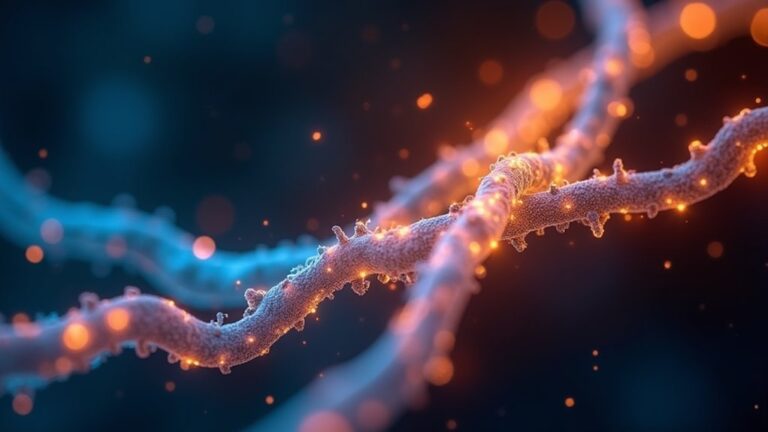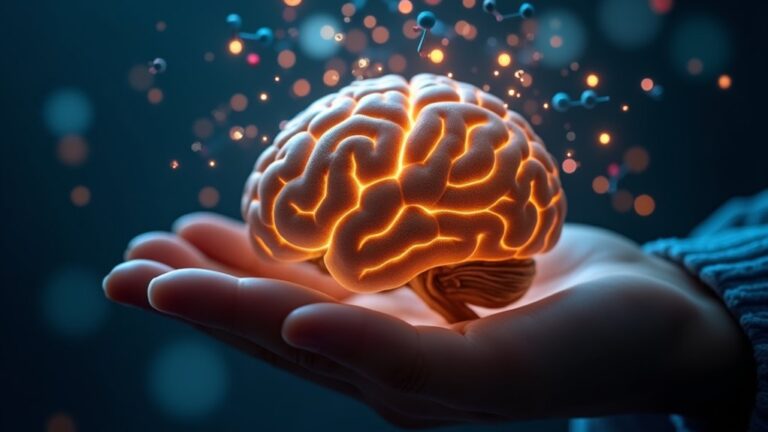Emotional disconnection leaves people feeling isolated even though surrounded by others, creating a silent struggle many don’t recognize. Childhood neglect, unresolved trauma, or excessive screen time can dull emotional awareness, making relationships feel shallow. Physical symptoms like fatigue or headaches often accompany the mental fog, while avoidance of deep conversations signals deeper issues.
Rebuilding connections begins with small steps mindfulness, honest conversations, or professional support but demands patience. The path back to emotional closeness isn’t rapid, but the rewards make it worth the effort.
Understanding Emotional Disconnection
Emotional disconnection can feel like being stuck behind a glass wall—seeing emotions but never quite reaching them. This detachment often stems from mental health struggles, trauma, or learned coping mechanisms, leaving individuals numb or distant from their feelings.
Symptoms vary; children may struggle with emotional regulation, while adults might avoid intimacy or battle low self-worth. Though not always damaging, extended disconnection can strain relationships and worsen underlying conditions.
Treatment focuses on rebuilding attachment through therapy, emotion regulation techniques, and addressing root causes like past neglect or neurological factors. Identifying these signs early helps in seeking support, as reconnecting with emotions is a gradual but restorative process.
Comprehending this state is the initial step toward mending the divide.
Common Causes of Emotional Disconnection
While identifying emotional disconnection is a starting point, comprehending why it occurs can make the experience feel less isolating. Childhood abuse or neglect often leads to emotional detachment as a way to cope with pain, creating long-term barriers to empathy.
Mental health struggles like depression, anxiety, or personality disorders can also numb emotions, making connections harder. Some antidepressants could dull feelings as a side effect, though they help in other ways.
Technology and social media can replace deep conversations with shallow interactions, reducing emotional engagement. Others suppress emotions to avoid discomfort, but this habit can deepen disconnection over time.
Each cause shapes how people experience emotional disconnection, but grasping them is the initial step toward reconnecting.
The Impact of Technology on Emotional Bonds
Though technology keeps people connected more than ever, it can also weaken the depth of emotional bonds. Digital communication often lacks non-verbal cues, making it harder to fully engage in empathy-related processes and form meaningful emotional connections. Overuse of social media and screens can lead to emotional detachment, as constant comparison and curated perfection replace genuine emotional awareness.
| Technology’s Impact | Emotional Effect | Potential Outcome |
|---|---|---|
| Excessive screen time | Reduced emotional awareness | Difficulty in emotion regulation |
| Text-heavy chats | Missing non-verbal cues | Weaker emotional bonds |
| Social media use | Increased emotional dysregulation | Superficial relationships |
Overreliance on technology can disrupt emotion regulation, leaving individuals struggling to maintain deep emotional bonds in person. The convenience of digital communication often comes at the cost of authentic connection.
How Social Media Affects Emotional Connection
Several studies suggest that heavy social media use can leave people feeling lonelier, even as they scroll through endless updates from friends and strangers. The lack of nonverbal cues, like facial expressions and tone of voice, makes it harder to build deep emotional connections online.
Constant social comparison can chip away at self-esteem, leaving users feeling inadequate or left out. Over time, this might/could contribute to loneliness, depression, or social anxiety.
While social media offers quick interactions, it often lacks the empathy and emotional intelligence found in face-to-face conversations. Without meaningful exchanges, people might/could struggle to feel truly understood or connected.
The more time spent online, the less opportunity there is to practice real-world emotional skills, creating a cycle of disconnection.
Psychological and Physical Effects of Emotional Disconnection
Emotional disconnection takes a toll on both mental and physical health, often leaving people feeling isolated and burdened.
Chronic loneliness and stress can weaken the immune system, while unresolved emotional distance can contribute to anxiety or depression. Over time, these effects can disrupt sleep, lower energy levels, and make everyday challenges harder to handle.
Mental Health Impacts
As someone grapples to connect with their own emotions or with others, the consequences frequently reverberate far beyond mere momentary unease. Emotional detachment can erode mental health, leaving individuals vulnerable to depression, anxiety, and deep loneliness.
Without emotional intimacy or social support, the mind struggles to process feelings, leading to a cycle of isolation. Empathy diminishes, making it harder to establish healthy relationships, which further deepens the sense of disconnection. Over time, chronic emotional withdrawal might even trigger physical responses like inflammation, as the body reacts to prolonged stress.
The absence of meaningful bonds can distort self-perception, fostering low self-worth and maladaptive coping mechanisms. While the mind and body are intertwined, the psychological toll of emotional disconnection often surfaces initially, shaping how one navigates daily life.
Physical Health Consequences
As the mind battles to process emotions, the body frequently carries the burden as well. Emotional detachment can lead to significant physical health problems, including higher risks of heart disease, high blood pressure, and weakened immunity.
Without social connection or emotional intimacy, stress-related illnesses like chronic pain, migraines, and digestive issues often emerge. Inferior sleep quality becomes common, leaving individuals fatigued and mentally drained.
Studies link prolonged emotional repression to increased inflammation, worsening chronic conditions over time. Some turn to substance abuse as an unhealthy coping mechanism, further damaging their well-being.
The body reacts when emotions go unexpressed—whether through tension, exhaustion, or illness. Recognizing these indicators at the outset can help address the root causes before long-term harm sets in.
Recognizing Signs of Emotional Detachment
Many people experience moments when emotions feel distant or hard to grasp, but persistent struggles to connect with feelings—one’s own or someone else’s—can signal deeper disconnection. Emotional detachment often manifests as a lack of emotional responses, making it hard to form emotional attachments or show empathy. This disconnection can strain relationships and impact mental health. Recognizing the symptoms early on helps address the root causes and explore coping strategies.
| Signs of Emotional Detachment | Possible Indicators |
|---|---|
| Difficulty expressing emotions | Avoiding deep conversations |
| Feeling numb or indifferent | Lack of reaction to joyful or sad events |
| Withdrawing from social interactions | Preferring isolation over connection |
| Struggling to empathize with others | Misreading or ignoring others’ emotions |
| Avoiding emotional intimacy | Keeping relationships superficial |
Understanding these signs is the initial step toward reconnecting emotionally.
Practical Strategies to Reconnect Emotionally
While emotional detachment can leave people feeling stuck, reconnecting with emotions is possible with deliberate steps. Tackling mental health and rebuilding emotional connection requires patience and effort.
Here are four practical strategies to foster emotional intimacy and reduce avoidance behaviors:
- Practice mindfulness – Techniques like meditation help individuals become more aware of their emotions, making it easier to process them.
- Strengthen social connections – Engaging in meaningful conversations and shared activities builds trust and emotional bonds.
- Seek professional counseling – Therapists can guide individuals through past traumas or patterns that contribute to detachment.
- Embrace vulnerability – Gradually opening up in safe spaces encourages deeper empathy and emotional closeness.
Small, consistent efforts can help bridge the gap created by emotional detachment, leading to healthier relationships and improved well-being.
Building Meaningful Relationships in a Digital Age
Digital communication has reshaped how people connect, but heavy reliance on texts and social media can leave relationships feeling shallow. While convenient, these tools often lack the depth of face-to-face interactions, leading to emotional detachment and loneliness.
Social media fosters comparison, making it harder to build genuine emotional intimacy. To counteract this, prioritizing in-person time helps strengthen emotional connections. Active listening and open expression of feelings create a sense of belonging.
Reducing screen time allows for deeper engagement, while self-awareness and emotional regulation help navigate digital distractions. Small steps, like setting aside phones during meals, can rebuild trust and closeness. Meaningful relationships thrive as technology supports, rather than replaces, real emotional bonds. Balancing digital and personal interactions is key to overcoming isolation.
Conclusion
Emotional disconnection doesn’t have to be permanent. Through taking small steps—like opening up to trusted friends or putting down the phone during meals—people can slowly bridge the gap they feel inside. It’s like planting seeds; with patience and care, deeper connections grow. While the path isn’t always easy, the rewards of feeling truly seen and understood make every effort worthwhile.





